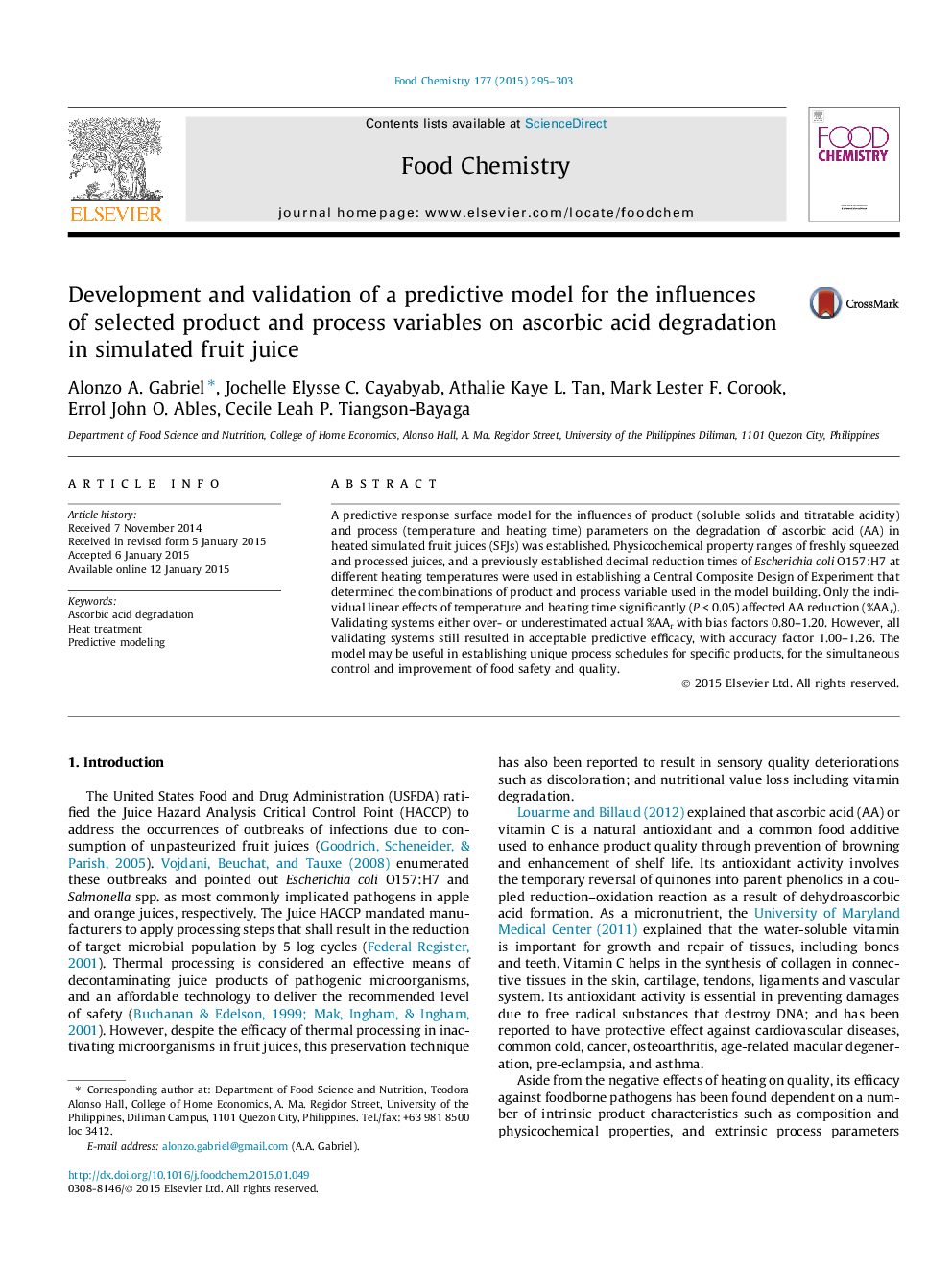| Article ID | Journal | Published Year | Pages | File Type |
|---|---|---|---|---|
| 7592537 | Food Chemistry | 2015 | 9 Pages |
Abstract
A predictive response surface model for the influences of product (soluble solids and titratable acidity) and process (temperature and heating time) parameters on the degradation of ascorbic acid (AA) in heated simulated fruit juices (SFJs) was established. Physicochemical property ranges of freshly squeezed and processed juices, and a previously established decimal reduction times of Escherichiacoli O157:H7 at different heating temperatures were used in establishing a Central Composite Design of Experiment that determined the combinations of product and process variable used in the model building. Only the individual linear effects of temperature and heating time significantly (PÂ <Â 0.05) affected AA reduction (%AAr). Validating systems either over- or underestimated actual %AAr with bias factors 0.80-1.20. However, all validating systems still resulted in acceptable predictive efficacy, with accuracy factor 1.00-1.26. The model may be useful in establishing unique process schedules for specific products, for the simultaneous control and improvement of food safety and quality.
Related Topics
Physical Sciences and Engineering
Chemistry
Analytical Chemistry
Authors
Alonzo A. Gabriel, Jochelle Elysse C. Cayabyab, Athalie Kaye L. Tan, Mark Lester F. Corook, Errol John O. Ables, Cecile Leah P. Tiangson-Bayaga,
